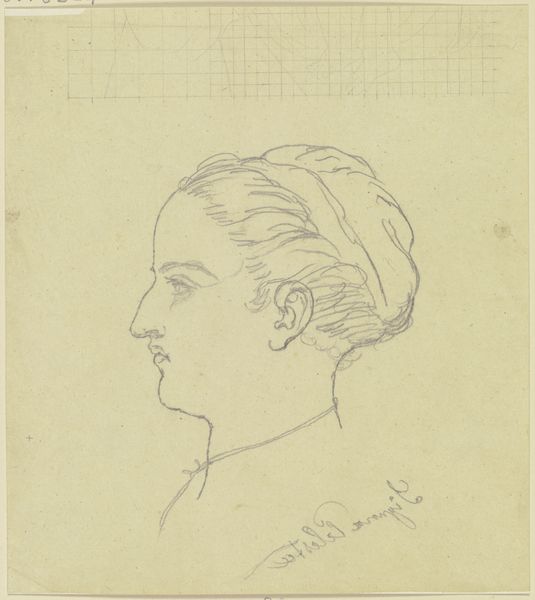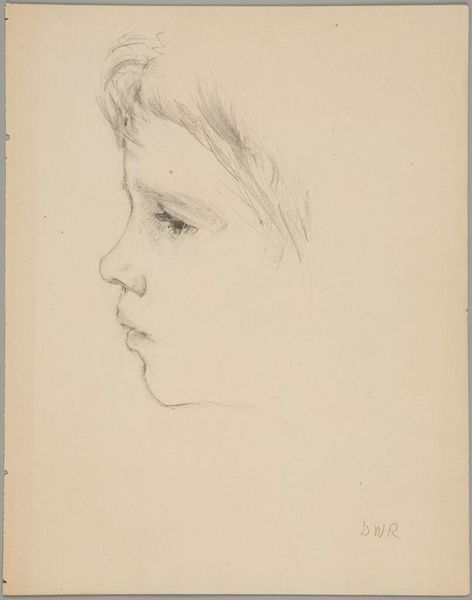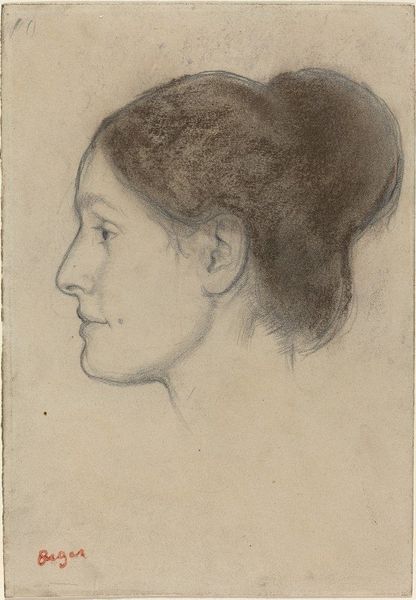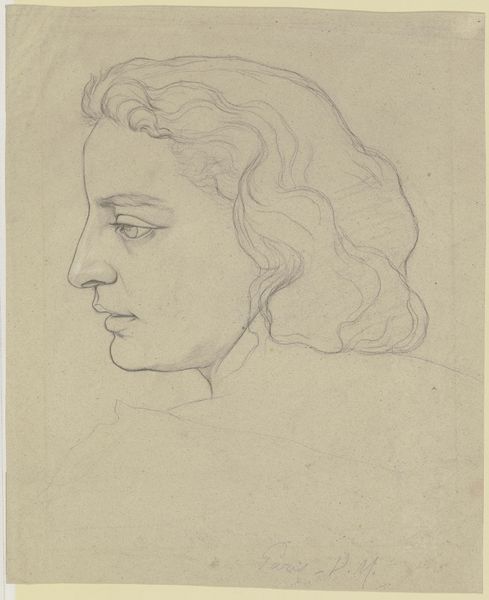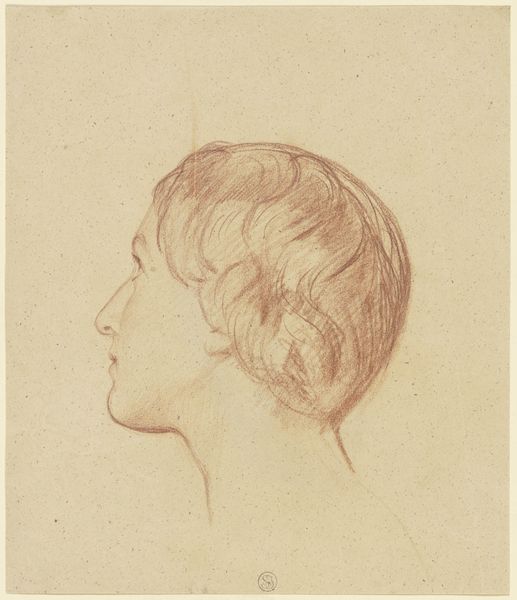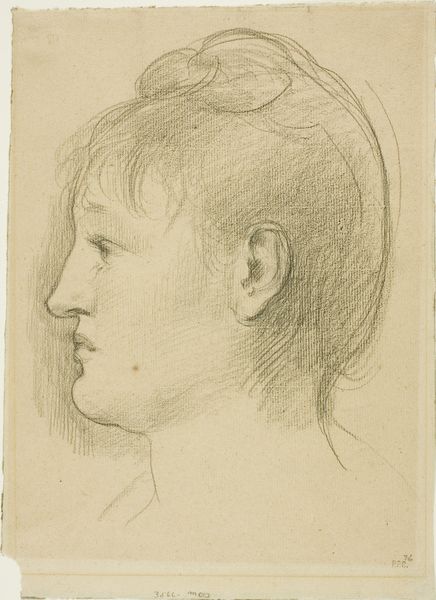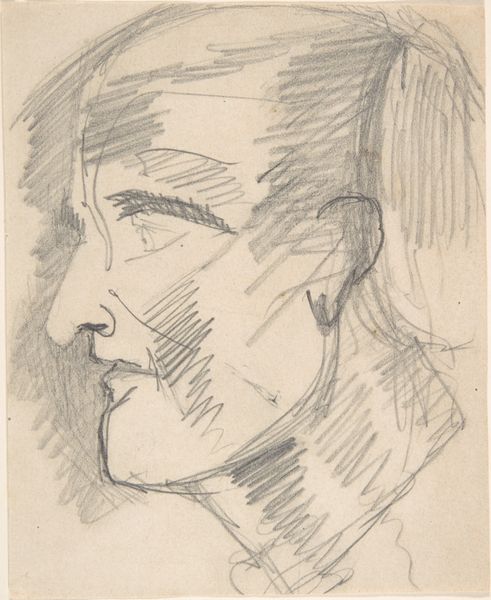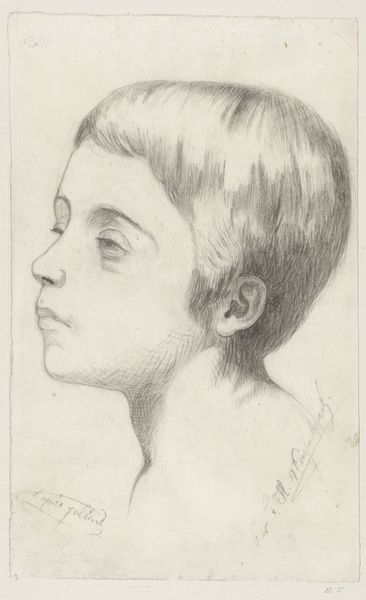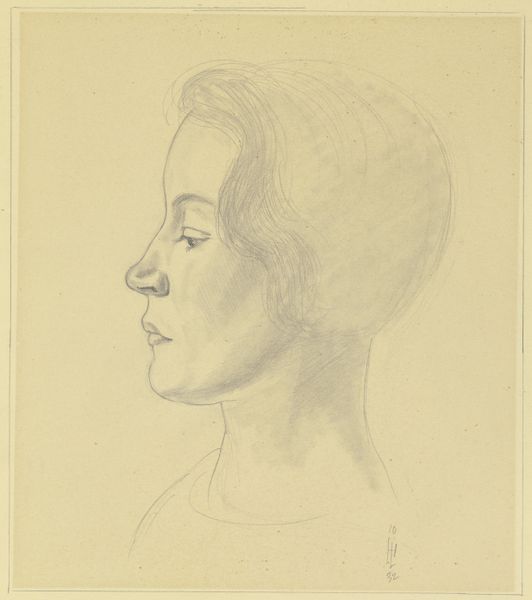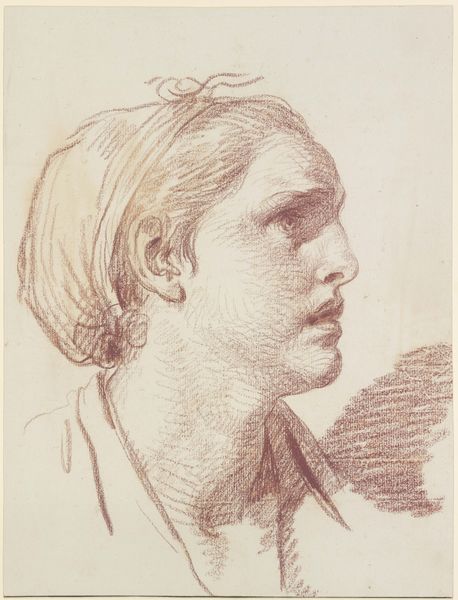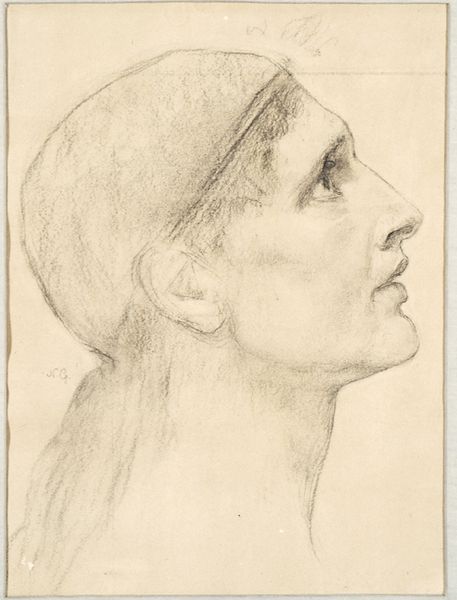
Portrait of Hortense Valpinçon (Mme. Jacques Fourchy) 1883
0:00
0:00
drawing, print, paper, pencil
#
portrait
#
drawing
# print
#
impressionism
#
figuration
#
paper
#
pencil drawing
#
pencil
#
portrait drawing
#
academic-art
#
modernism
#
realism
Dimensions: 9 13/16 x 6 7/16 in. (25 x 16.3 cm)
Copyright: Public Domain
Curator: Let's turn our attention to Edgar Degas’s 1883 pencil drawing, "Portrait of Hortense Valpinçon (Mme. Jacques Fourchy)." It resides here at the Met. Editor: My first impression is one of quiet observation. The monochromatic palette creates a sense of intimacy. You really hone in on Hortense Valpinçon. Curator: Absolutely. Degas created this piece as a study for a larger painting. Notice the emphasis on line and form, almost a sculptural quality, really reflecting his engagement with classical traditions of representation. It demonstrates a growing movement towards Realism at that time. Editor: And despite that realism, the sitter appears withdrawn. It almost feels like she’s resisting being looked at, or perhaps passively enduring it. One has to wonder about her own feelings regarding representation within this male gaze. Curator: Well, the relationship between artist and sitter was quite important to Degas; there's always an awareness of their dynamic. We should remember that Impressionism wasn't merely about fleeting moments; it also reflected the rapidly changing social roles and norms of the era. Consider, if you will, how new possibilities opened up for women as society modernized. Editor: I think the sketch, rather than painting, makes us confront the inherent power dynamic in portraiture even more. It invites us to examine not just who Hortense Valpinçon was, but how her identity was constructed and viewed in the Parisian society of her time. It's so much more than a portrait—it reveals assumptions around gender and visibility. Curator: I agree, to some degree. The brilliance lies not only in the representation of her likeness, but the tension between public identity and the subjectivity the artist subtly draws out for our analysis. Editor: Indeed. It prompts us to contemplate not only the artistic process, but also the socio-cultural fabric of which it is inextricably a part. Curator: A compelling case for engaging deeply with both the artwork and its time, I think. Editor: A sentiment with which I entirely agree. Let’s carry these complexities with us as we continue our tour.
Comments
No comments
Be the first to comment and join the conversation on the ultimate creative platform.

